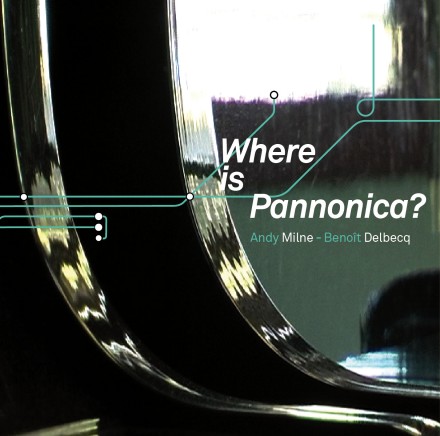Andy Milne / Benoit Delbecq
Where is Pannonica?
SGL SA1579-2“…a strangely beautiful new album…”
— Nate Chinen, New York Times
“…a brilliant piece of work, amazing colors and soundscapes, and great sympatico…”
—Fred Hersch
A piano duo project like no other, Where is Pannonica? brings together two longtime friends for a 3-week composing/recording residency at the Banff Centre, where they originally met in 1990 while studying with Steve Coleman at the jazz workshop. A commission from Chamber Music America’s French-America Jazz Exchange provided the impetus for this intensive exploration of the piano as a world of sound unto itself. During the process these two master performers, each with his own fully evolved style, discovered and nurtured an almost magical affinity. Beyond a virtuosic exploration of extended pianistics and a cogent, highly entertaining presentation of improvisational intelligence, Where is Pannonica? is a step outside the box, opening onto barely explored conceptual and sonic realms of audio art.
Benoît Delbecq has synthesized sounds and concepts from Ligeti and Steve Lacy to Aka Pygmy music, while Andy Milne’s long association with Steve Coleman inspired a unique integration of rhythmic concepts from Cuba, Ghana, American jazz, funk and hip-hop. Their shared respect and understanding for each other’s approach to the piano and to improvisation helped connect them in a profound, almost seamless thought process throughout the collaboration. Interpreting each other’s compositions and creating pieces collaboratively, they used this synchonicity to develop complex rhythmic, melodic and harmonic relationships involving, timbre and texture, room acoustics, space, and time.
The spatiliazation of the music is heard in its most complete form in the surround mix – in fact much of the music was composed specifically to exploit and draw inspiration from the sonic properties provided by the 5.0 format. In stereo too, each piece – and indeed the recording as a whole – is conceived as an ongoing dialogue between the instruments, the players, and the room. Extensive use of piano preparations transforms pitch and timbre, which are then continuously reorganized in rhythmic interplay from one pianist to the other. Milne comments: “When composing I tried to think of the 360 degrees of the room space and the more immediate space within and around each piano. For the intro to ‘Ice Storm’ I thought very consciously about creating compositional elements that would play with the sense of the space between the 2 pianos, using rhythm mostly, to create 5-channel imaging effects within the music.” On several pieces (e.g. the coda of “Divide Comedy”) Delbecq adds a shadowing, phantasmal element to the spatial aspects through the subtle use of electronics: “Dlooper is a Max-MSP stand-alone application, a multi-track looper that can superimpose 8 stereo channels, and output them on 8 different channels. I chose to play a stereo mix of those layers into speakers placed in the back of the concert hall, as if a radio were making comments on our statements, playing with the memory of what had just been played. The 5.0 microphone tree found itself being the ‘mixer’ – I was interested in having a stereo signal sent into speakers so as to artefact the room reflections and reverb.”
A great deal more could be said about the music and the process of creating it: please refer to the interview with the artists and the 15-minute video on the CD, which can also be viewed here.
Andy Milne is considered one of the most distinctive voices at the heart of New York’s creative jazz scene, performing throughout the world in a range of settings, including collaborations with Steve Coleman, Ravi Coltrane, Carlos Ward, Carla Cook, Sekou Sundiata, Avery Brooks, Ralph Alessi, Cassandra Wilson, and Sonny Greenwich. Milne’s genre-breaking band Dapp Theory is helping to re-draw and extend the boundaries of jazz. His solo piano SACD Dreams and False Alarms was released on Songlines in 2007.
Described by The New York Times as “brilliant and unconventional,” Benoît Delbecq is acclaimed as one of France’s indispensable pianists. He has been involved in numerous collaborations with French musicians, visual artists and poets, and with North American, European and African musicians, and has forged a personal style by drawing from jazz, ambient, contemporary classical and non-western music. Jazz Times calls him “one of the avatars of prepared piano” for the way he creates unusual harmonies, colours and phrases. He leads or co-leads several projects, including Delbecq 3, Kartet, The Recyclers, Poolplayers, Ambitronix and PianoBook, and has an extensive catalogue of releases on Songlines, including the solo piano SACD Nu-turn (2003).

